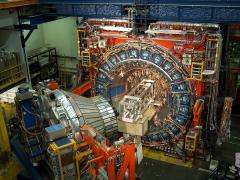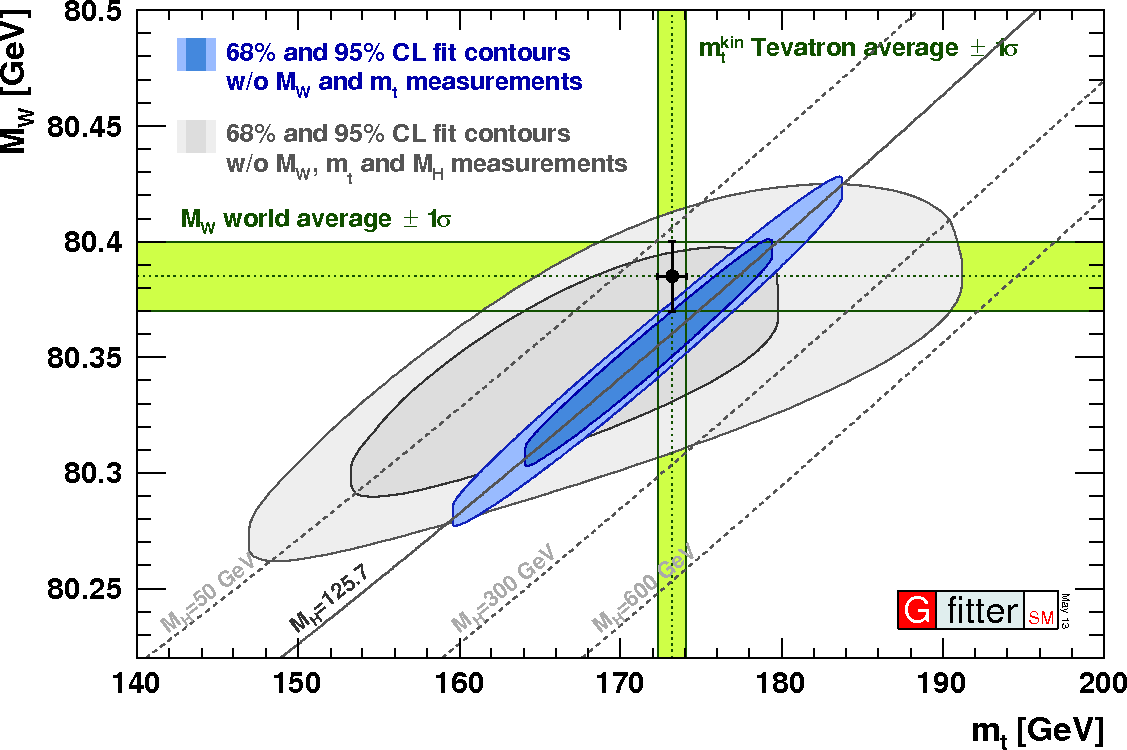CDF Experiment

The Collider Detector at Fermilab (CDF) experiment ceased taking data in September 2011 after more than 25 years at the energy frontier of particle physics. Proton anti-proton collisions at a center of mass energy of 1.8 and 1.96 TeV were analysed resulting in over 650 publications. The experiment has made many landmark measurements in particle physics but particularly the discovery of the top quark, the first observation of Bs oscillations, the first observation of single top production, the discovery of several new quark bound states such as the Bc, the ΣB,the Ξb, and the Y(4140) and the world's most precise measurement of the mass of the W boson (see below). CDF also recently published its final results on the Higgs boson which presently have the most statistically significant observation of the decay of the Higgs boson to two b-quarks.
UCL joined CDF in 1999 and was heavily involved in precision electroweak measurements particularly those of the W boson. The group provided the electroweak convenors (Mark Lancaster, David Waters) overseeing all electroweak analyses for almost ten years and also provided the convenors (Emily Nurse, Ilija Bizjak) for the W mass and width group. Tom Riddick, Dan Beecher, Sarah Malik, Troy Vine, Ben Cooper, Dustin McGivern and Lucio Cerrito all obtained their PhDs at UCL with theses on CDF data. These included the world's most precise measurements of the mass and width of the W boson, a study of W polarisation, the first measurement of the WW cross section at 1.96 TeV and a study of W+jet events. Rob Snihur, Ilija Bizjak, Angela Venters (nee Wyatt) and Valeria Bartsch were RAs in the group between 2000 and 2011.
UCL group members were part of the CDF team that in 2012 published the world's most precise measurement of the mass of the W boson. This measurement provides and powerful test of the internal consistency of the Standard Model (SM), particularly that pertaining to the Higgs boson. Within the SM the mass of the Higgs boson can be predicted from the measurements of the W boson and top-quark mass. The value predicted from these measurements of 94+29-24 GeV is in good agreement with the mass of the Higgs boson of 125.5 ± 1 GeV measured at the LHC. Conversely the measured Higgs mass can be used to predict the mass of the W boson. The prediction is 80362 ± 10 MeV which compares very well with the measured value of 80385 ± 15 MeV and illustrates that so far all electroweak measurements are consistent with the SM. This measured value for the W mass is a combination of results from CDF, D0 and LEP. The CDF result with an uncertainty of 19 MeV was by far the most precise of these measurements and was featured in 2012 as a cover story and synopsis in Phys. Rev. Lett. ATLAS have recently matched this CDF precision and their value is in good agreement with CDF's and the SM prediction.

